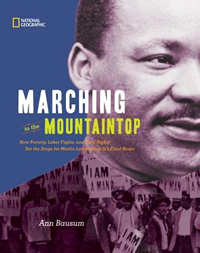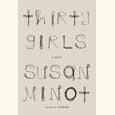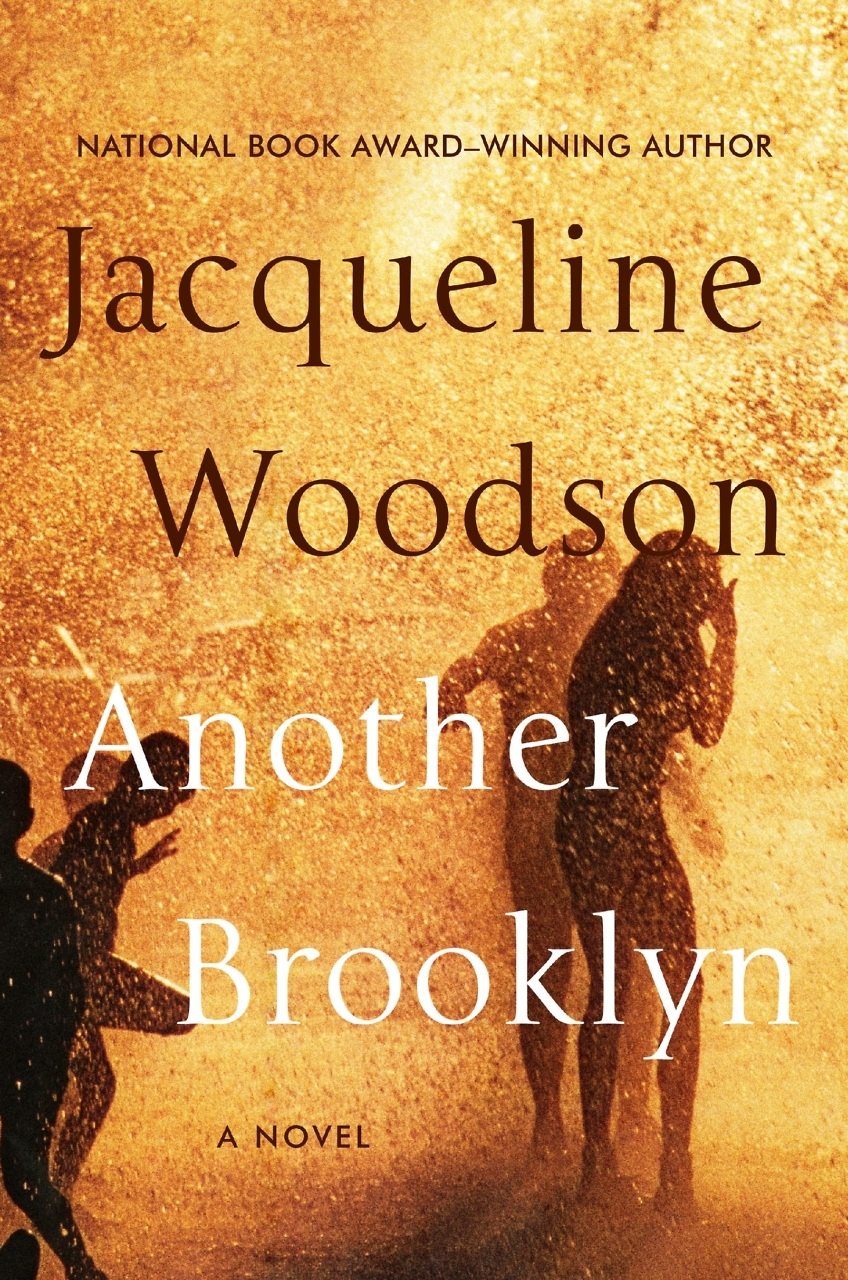Setting Out for the Promised Land
Marching to the Mountaintop, Ann Bausum’s overview of civil-rights history for young readers, begins in Memphis
Marching to the Mountaintop, Ann Bausum’s overview of civil-rights history for young readers, begins in Memphis on February 1, 1968, the day Echol Cole and Robert Walker were crushed to death when a loose shovel fell into the mechanism of the garbage truck in which they were riding. Eleven days later, nearly one thousand sanitation, sewer, and roadway workers in Memphis began a city-wide strike for safer and more humane working conditions, higher and more consistent wages, and the right to have a voice in their own treatment. Local Union 1733 of the American Federation of State, County and Municipal Employees had formed as a result of a short-lived 1963 strike, which was followed by another attempt in 1966. The deaths of Cole and Walker succeeded in galvanizing the city workers, who resolved this time to stand their ground until their demands were met.
Led by local union officials, outside labor organizers, and clergymen, including the Reverend James Lawson—who contributes the foreword to Bausum’s book—the group committed itself to nonviolent civil disobedience as practiced by Dr. Martin Luther King Jr.: mass meetings, peaceful marches, and boycotts. Standing in their way was the new mayor of Memphis, Henry Loeb—himself a former director of public works for the city—and the mostly white Memphis City Council.
 During the protesters’ first march on February 13, more than eight hundred African-American strikers traveled the five miles from north Memphis into downtown, where they were met by the mayor, who rebuffed their demands. Meetings with the city council were equally disappointing and the strike dragged on, which meant garbage piled up, and the city was forced to hire replacements for the striking workers. During a subsequent march on February 23, the Memphis police attacked protesters with mace. Despite such setbacks, the number of people involved in the protest continued to rise. A rally on March 14 brought out nine thousand. “It’s hard for whites to change their minds, even the good ones,” Roy Wilkins, president of the NAACP, remarked. “And the bad ones just get worse.”
During the protesters’ first march on February 13, more than eight hundred African-American strikers traveled the five miles from north Memphis into downtown, where they were met by the mayor, who rebuffed their demands. Meetings with the city council were equally disappointing and the strike dragged on, which meant garbage piled up, and the city was forced to hire replacements for the striking workers. During a subsequent march on February 23, the Memphis police attacked protesters with mace. Despite such setbacks, the number of people involved in the protest continued to rise. A rally on March 14 brought out nine thousand. “It’s hard for whites to change their minds, even the good ones,” Roy Wilkins, president of the NAACP, remarked. “And the bad ones just get worse.”
When Lawson called King to invite him to Memphis to support the striking workers, King agreed to come. He arrived as the strike was entering its sixth week. Talks had broken down, and the strikers faced an impasse. The promise of King’s presence in the city was enough to gather fifteen thousand enthusiastic supporters to hear him speak. Ten days later, King returned to Memphis to lead a similar-sized group in a march through the city. When crowd control proved impossible and the organizers’ peaceful plan deteriorated into vandalism and looting, police responded quickly and decisively. Scores were injured and sixteen-year-old Larry Payne was shot and killed by police. City officials declared a state of emergency and called in the National Guard. President Lyndon B. Johnson sent a federal mediator to help settle the strike.
 The failure of the march weighed heavily on King. On April 3, he returned to Memphis, where he delivered the now-famous speech that seems to foreshadow his imminent death. The weather was stormy, and only a few thousand brave souls were on hand to hear him, but it was a night they would never forget. King used a powerful Old Testament metaphor to characterize the goal of their struggle for equality: “I may not get there with you, but I want you to know tonight, that we, as a people, will get to the promised land. I’m happy tonight. I’m not worried about anything. I’m not fearing any man. Mine eyes have seen the glory of the coming of the Lord.” The atmosphere was electric, the crowd reaction spontaneous and heart-felt: “Commotion engulfed the crowd,” Bausum writes. “Cheers drowned out all sounds from the evening’s storm. Many people leaped to their feet, shouted, and clapped their hands. Others sat sobbing, consumed with emotion.”
The failure of the march weighed heavily on King. On April 3, he returned to Memphis, where he delivered the now-famous speech that seems to foreshadow his imminent death. The weather was stormy, and only a few thousand brave souls were on hand to hear him, but it was a night they would never forget. King used a powerful Old Testament metaphor to characterize the goal of their struggle for equality: “I may not get there with you, but I want you to know tonight, that we, as a people, will get to the promised land. I’m happy tonight. I’m not worried about anything. I’m not fearing any man. Mine eyes have seen the glory of the coming of the Lord.” The atmosphere was electric, the crowd reaction spontaneous and heart-felt: “Commotion engulfed the crowd,” Bausum writes. “Cheers drowned out all sounds from the evening’s storm. Many people leaped to their feet, shouted, and clapped their hands. Others sat sobbing, consumed with emotion.”
There would be many more tears the following day, as shocked supporters struggled to understand what had happened on the balcony of the Lorraine Motel just before six o’clock in the evening. Bausum covers the facts of King’s assassination in a clear and concise fashion, while also briefly touching on theories of conspiracy and the roles of the police officers and the FBI agents who kept King under near-constant surveillance, even as James Earl Ray pulled the trigger from the window of a boarding house across the street. Three days later, Coretta Scott King traveled to Memphis to complete the march as her husband had planned—this time in his memory. The peaceful, silent march drew more than forty thousand participants. Mrs. King spoke to the crowd, asking, “How many men must die before we can really have a free and true and peaceful society? If we can catch the spirit, and the true meaning of this experience, I believe that this nation can be transformed into a society of love, of justice, peace, and brotherhood where all men can really be brothers.” On April 16, the sixty-fifth day of the strike, a settlement was finally reached between the city of Memphis and the striking workers.
Bausum juxtaposes striking black and white photographs of the period with bold colors and modern typography to create a unique visual experience for the reader. She also includes a number of special features that young scholars will find useful, such as “Cast of Characters” pages, a timeline, a resource guide and bibliography, and a detailed index. Her careful and thorough portrayal of this pivotal period shows children how one event can set in motion forces powerful enough to change a city, a state, a nation—and maybe even the history of the world.
Ann Bausum will discuss Marching to the Mountaintop at The Booksellers at Laurelwood in Memphis on April 5 at 6 p.m. Click here for details.


